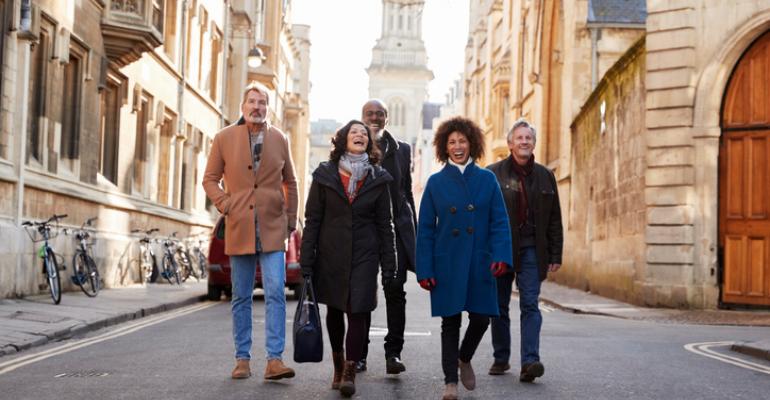In an incentive industry first, three organizations banded together this year to conduct an in-depth study of the global incentive travel industry, looking at budgets, goals, programming, and other issues around motivational travel programs.
The Society for Incentive Travel Excellence, Financial and Insurance Conference Professionals, and the Incentive Research Foundation conducted the study in association with J.D. Power, receiving responses from 398 buyers and 553 sellers from 80 countries.
Budgets Are Up, But …
Overall, 54 percent of buyers report an increase in incentive travel budgets. However, breaking down those respondents between corporate end users and incentive houses shows that corporate buyers are not in as strong a growth position as the group overall. Only 46 percent of corporations are seeing increases in incentive budgets; it’s more likely budgets are staying the same or decreasing.
At the same time, 65 percent of respondents see attendee numbers going up. And those are stats that Steve O’Malley, division president, Maritz Travel, is seeing first hand. “Yes, we’re seeing more people qualifying because the markets are so hot. Whether that’s the number of new auto sales or the entire financial services industry which seems to be on fire, we are seeing more people qualify for incentive programs—but what we’re not seeing is budgets going up. Clients are saying, we have more qualifiers, cut but only X number of dollars for the program; make it work. So, we’re looking for ways to stretch those dollars.”
While the median per-attendee spending for incentive travel remained flat at $4,000, according to the index, corporate buyers report significantly higher per-person spending (median: $4,500) than incentive house buyers (median: $3,500).
Multi-Pronged Cost Management
Like O’Malley, two-thirds of corporate buyers and more than 80 percent of incentive houses report that they are taking steps toward cost containment. The Incentive Index reports that the most popular cost-saving tactics are:
• booking all-inclusive resorts (41 percent)
• picking less expensive destinations (39 percent)
• running shorter programs (37 percent)
• picking less expensive hotels (29 percent)
• offering less expensive amenities (27 percent)
The least popular choices for cutting costs were shifting to offer more individual incentive travel rewards (9 percent) and spending less on food and beverage (12 percent).
Programming Musts and Maybes
According to the Index, incentive programs that require four hours or less travel time run 4.3 days on average. Programs that require more travel time average 5.3 days. Whatever the length, todays incentives almost always include spouses (96 percent of the time) and wellness elements, like yoga or healthful meals (86 percent). Planners are also including these elements in the programming and planning:
• A mobile app (79 percent)
• Social media campaigns (74 percent)
• Corporate social responsibility (74 percent)
• Their own security firm (67 percent)
• Their own medical personnel (37 percent)
The full 68-page report, which dives deep into the numbers and includes multi-year reporting against earlier smaller studies by the IRF, can be downloaded from the IRF website.





